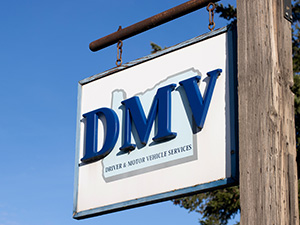 The recent data breach at the Oregon Department of Motor Vehicles (DMV) has undoubtedly sent shockwaves through the community. Understandably, you might be worried about the safety of your personal information. But fear not! We’ve got you covered with three easy-to-follow steps that will help you protect yourself and minimize potential damage.
The recent data breach at the Oregon Department of Motor Vehicles (DMV) has undoubtedly sent shockwaves through the community. Understandably, you might be worried about the safety of your personal information. But fear not! We’ve got you covered with three easy-to-follow steps that will help you protect yourself and minimize potential damage.
1. Keep an Eye on Your Credit Reports
One of the first things you should do after a data breach is to monitor your credit reports closely. Here’s how you can do that in layman’s terms:
- Request a free credit report from each of the three major credit bureaus (Equifax, Experian, and TransUnion) at AnnualCreditReport.com. You’re entitled to one free report per year from each bureau.
- Review your credit reports thoroughly, looking for any unauthorized accounts, inquiries, or suspicious activity.
- If you find anything fishy, report it immediately to the respective credit bureau and consider placing a fraud alert on your credit file. This alert will notify potential creditors to take additional steps to verify your identity before granting credit in your name.
- You can also lock your credit by making an account and clicking the “Lock Credit” button. I use the Experian App on my phone to lock my credit and I’m notified if anybody tries to open an account using my personal Identification data.
2. Change Your Passwords and Strengthen your Security
Although the data breach may not have directly compromised your passwords, it’s still a good idea to update them as a precautionary measure. Here’s what you should do:
- Change the passwords for all your important accounts, such as email, banking, and social media. The most important will be the email password. If you lose control of your email, you lose control of everything.
- Create strong, unique passwords for each account. A strong password typically includes a mix of uppercase and lowercase letters, numbers, and special characters. Longer is better than highly complicated. Use a phrase you can easily remember if you use a Password Manager.
- Enable two-factor authentication (2FA) on your accounts, if available. It adds an extra layer of security by requiring a second form of verification (like a text message code) before granting access to your account.
3. Be Wary of Scams and Phishing Attempts
After a data breach, scammers may try to take advantage of the situation by posing as legitimate organizations or individuals in an attempt to steal even more information. Here’s how you can protect yourself:
- Be cautious of any unsolicited emails, phone calls, or messages claiming to be from the Oregon DMV, your bank, or other institutions.
- Never provide personal information, such as your Social Security number, passwords, or financial details, to anyone you don’t trust or haven’t verified.
- If you receive a suspicious email, don’t click on any links or download any attachments. Instead, contact the supposed sender through a verified method (like their official website or phone number) to confirm the authenticity of the message.
By following these three simple steps, you’ll be well on your way to safeguarding yourself against potential repercussions from the Oregon DMV data breach. Stay vigilant, and remember: when it comes to your personal information, it’s always better to be safe than sorry!







